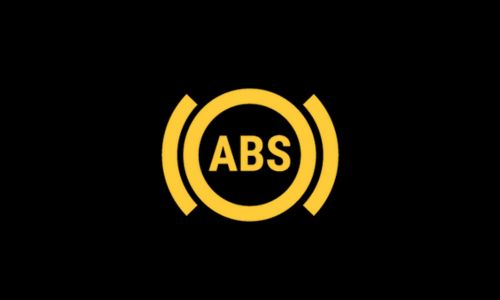Diesel particulate filter (DPF) warning light: Everything you need to know
Diesel engine exhausts are fitted with a particulate filter that is designed to reduce emissions levels by catching the larger soot particles coming from the exhaust.
When the diesel particulate filter (DPF) dashboard warning light illuminates, this indicates there is an issue with your DPF, also known as the exhaust particulate filter (EPF).
A damaged DPF can compromise your fuel efficiency and may even cause your motor to fail its MOT. It will also be more difficult to sell your car with DPF issues, and its market value will be reduced.
In this guide, we’ll explain what this important warning light looks like, how it is triggered, and the action you should take when it appears. We’ll also cover DPF repair costs and the consequences of ignoring a DPF light.
Get a free valuation
What is the exhaust particulate filter warning light?
The DPF warning light usually appears when the DPF filter is too full of soot, meaning it can no longer self-clean. This may occur if you frequently drive your car for short distances or at low speeds, as the DPF won’t have the opportunity to reach the minimum temperature for regeneration.
The appearance of your DPF warning light may vary depending on your car’s make and model. Here are some of the most common variations of the exhaust particulate warning light:
- A piped rectangle with a diagonal line down the centre, blocking the flow of large solid dots.
- A piped, elongated hexagon shape, with a solid rectangle on the right-hand side, blocking the flow of small solid dots.
- A piped, rounded rectangle, filled with large, outlined dots.
- A set of solid dots, contained within two horizontal lines, with smoke passing through.
- A set of solid dots contained within two vertical lines, with a single arrow passing through.
- A set of solid dots contained within two vertical lines, with two arrows passing through (one pointing to the left and the other to the right).

In February 2014, it became a legal requirement for all diesel powertrain cars registered in the UK to have a DPF fitted. Therefore, if your car does not have a DPF, it will be classed as unroadworthy – and will automatically fail its next MOT test.
A DPF significantly reduces particulate emissions, including emissions from the smallest particulates, which present the largest threat to public health.
Why has the DPF light illuminated?
-
DPF blockage - This is the most common reason for the DPF warning light to appear. Soot buildup can cause blockages in the filter. This may be resolved by continuously driving at higher speeds - or taking your car to a garage for ‘forced regeneration’ to clear your DPF.
-
Faulty temperature or pressure sensor - Experts from a specialised DPF cleaning company have reported that DPF warning lights may also be caused by faulty temperature or pressure sensors. If you experience these issues, a reputable mechanic should be able to help.
-
Faulty MAF sensor - If the Mass Airflow (MAF) sensor is not working correctly (or at all), the DPF regeneration process may not be triggered when necessary, resulting in a blocked DPF. This can also prevent the engine and the electronic control unit (ECU) from working correctly.
-
Glow plug issues - Glow plugs provide heat for the DPF, as determined by the ECU. If the glow plugs are faulty, this can prevent the DPF from regenerating, causing the filter to clog.
-
Using low-quality fuel - Avoid using low-quality fuel, as this can potentially damage your diesel particulate filter.
-
Driving on a near-empty tank - Don’t allow your fuel tank to run near empty on a regular basis. Some diesel models will disable DPF regeneration to save fuel when reserves are low.
What should I do when the exhaust particulate filter warning light comes on?
The correct course of action will depend on whether you’re seeing a flashing or solid DPF light:
Flashing DPF light
If your DPF light is flashing, this means that the filter is getting full of soot. You may be able to resolve this light manually with one of the following methods:
Passive DPF regeneration:
Passive regeneration occurs when you drive at a fast, sustained speed. This allows the exhaust to reach a sufficient temperature to cleanly burn away any excess soot caught in the filter.
The process is triggered when the filter reaches a preset capacity (usually around 45%), and the exhaust’s temperature rises to burn away the excess soot. However, this is only effective when you maintain a consistent speed for 30-50 minutes on a motorway or A-road.
If the journey is too short, the regenerative process may not fully complete. You might be able to resolve the light by continuously driving over 40mph for around 10 minutes.
The following signs indicate that DPF regeneration is taking place:
- Fuel consumption slightly increases.
- The cooling fans are running.
- The engine notes change.
- You notice a hot, acrid smell coming from the exhaust.
- The automatic Stop/Start feature deactivates.
Please note: When the soot capacity in your DPF reaches around 70%, your car will go into ‘limp mode’, restricting its performance. At this stage, it’s no longer possible to resolve the issue manually; the only solution is to have your DPF professionally cleaned at a local garage.
Solid DPF light
When you see a solid DPF light, this indicates that the particulate filter is approaching the maximum soot level. To remedy this light, you’ll need to take your car to a local garage for a ‘forced regeneration’.
Please note: Once your DPF reaches around 90% capacity, it is likely that you will need a full DPF replacement. Typical replacement costs in the UK run between £1,000 and £3,500. So, act swiftly to avoid a major expense.
General tips for dealing with an exhaust particulate filter warning light
-
Check light status - As we’ve mentioned, a solid DPF light is more pressing than a flashing one, although both require action.
-
Check the gas cap - If the fuel cap is left open, its magnets are missing, or its sensor is faulty, this can prevent the DPF from regenerating, which in turn, can cause the DPF warning light to appear. Check that the magnets are present and working as they should, then check the wiring on the sensor. If you are unable to resolve the issue yourself, take your car to a mechanic.
-
Look out for other warning lights - If other dashboard warning lights appear alongside the DPF light, take the appropriate action to resolve them, including visiting your local garage if necessary. Consider whether you’ll also have to pay the cost of replacing your exhaust.
-
Reduce speed and weight - Drive at lower speeds and avoid carrying heavy loads in your car if it feels different.
Can I drive with the exhaust particulate filter warning light on?
Whilst you can technically drive with the DPF light on, we would advise against this. You should take your car to a qualified mechanic at the earliest opportunity. When the DPF light is solid, it is especially important to visit a garage promptly.
If you ignore the DPF light, your car may enter ‘limp home’ mode to prevent engine damage. Once your DPF reaches around 90% of its soot capacity, it cannot be cleared and must be replaced.
What happens if I ignore the exhaust particulate filter warning light?
If you ignore the DPF warning light and the filter does not regenerate, your car will go into ‘limp mode’ to limit the volume of soot passing through the filter. Limp mode is activated when the DPF is blocked - and exhaust gases cannot escape normally.
Running a ‘forced regeneration’ program can get your car out of limp mode. However, this requires a special diagnostic tool, meaning you’ll have to take your car to a local garage.
DPF fixes and repair costs
The cost of resolving a DPF warning light depends on the severity of the problem:
- If the filter needs to be manually regenerated, you’ll simply have to pay for the fuel required to drive at a sustained speed to burn away any excess soot.
- However, if the car has entered limp mode, you’ll need to take your car to a garage. A mechanic can run a forced regeneration, which will clear away the excess soot and disable limp mode. This typically costs around £100.
- Unfortunately, if the particulate filter needs replacing, you’ll typically have to pay between £1,000 and £3,500. If you have an older model, consider whether the replacement costs would exceed the value of your car. Using our free car valuation tool to work out your motor’s market value can help you make an informed decision.
Will I fail my MOT if the DPF warning light appears?
Yes, most warning lights, including the DPF light, will cause MOT failure if they appear consistently throughout the test.
The particulate filter is part of the MOT checklist for all diesel vehicles. Issues with the particulate filter, such as the car running in limp mode will cause MOT failure. You will automatically fail your MOT if the diesel particulate filter is missing or has been removed.











